Coal Oil Johnny House (McClintock-Steele-Waitz House)
Introduction
Text-to-speech Audio
John Washington Steele (1843 – 1921), aka Coal Oil Johnny, was a nationally-known spendthrift who made a fortune (around $8 million today) off of oil royalties and spent it all in under a year. His childhood home was located between the Rynd farm and Rouseville. The Oil Region Alliance bought the property in 1999 with the intent of historical preservation and rehabilitated it to its appearance during the 1860s. In the process, it was moved into the Oil Creek State Park. It now serves as a small museum detailing Coal Oil Johnny’s life, shedding light on the early years and material culture of Pennsylvania’s oil boom.
Images
The house as it appeared in the late 1800s, on a post card
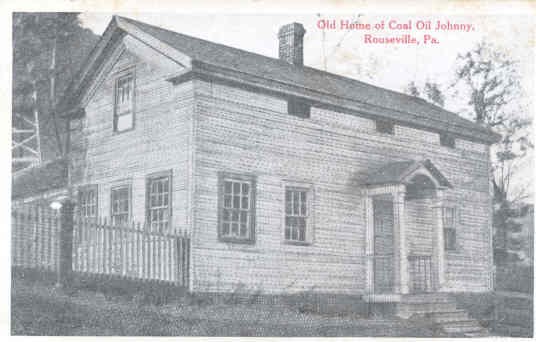
Pre-restoration - notice the "ghosting" left from the removed porch extension, 1999
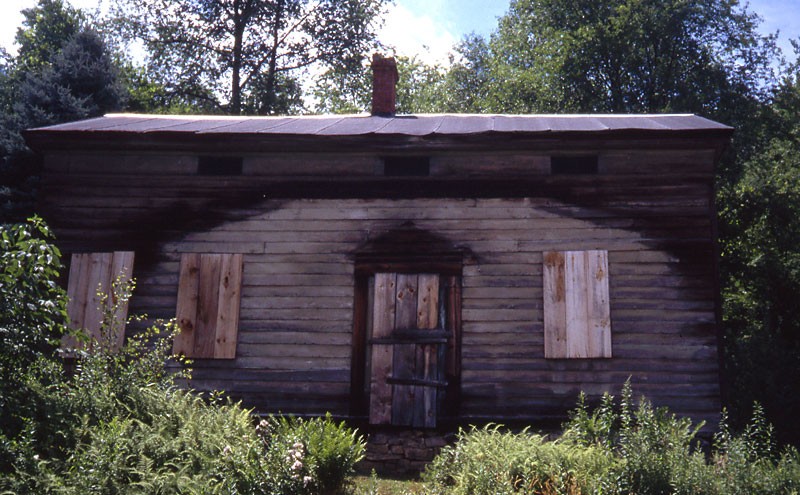
The house was de-constructed and moved to Oil Creek State Park in 2001
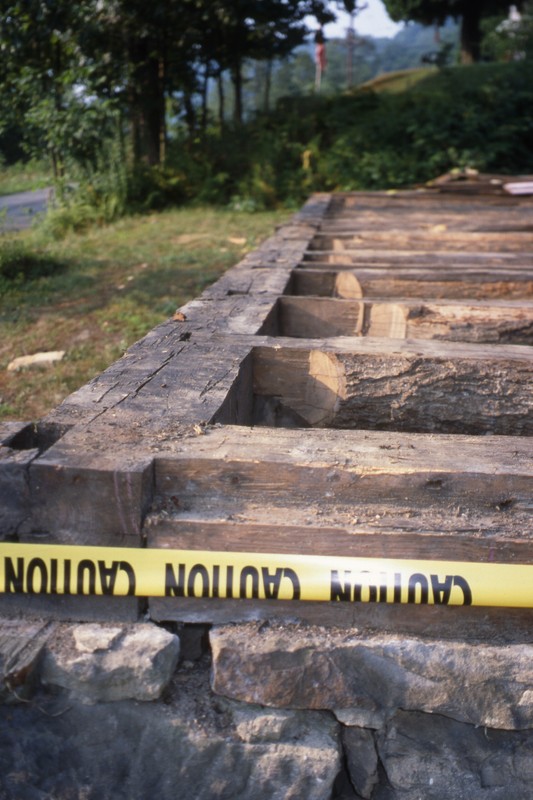
Restored Coal Oil Johnny House
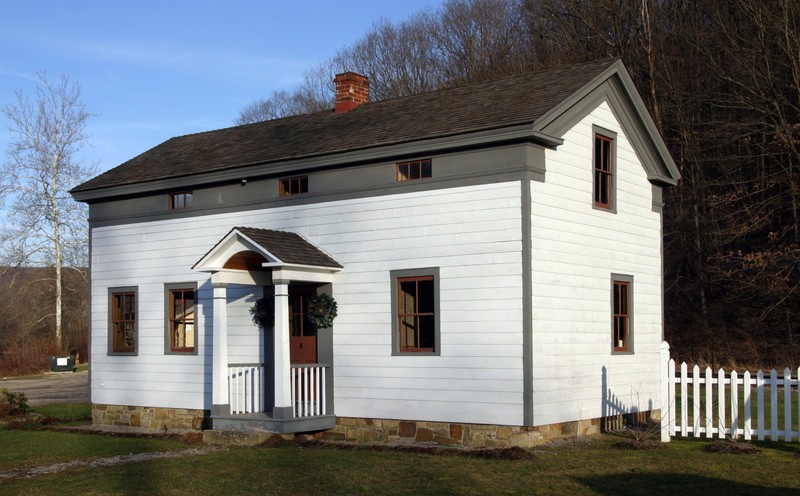
Restored parlor
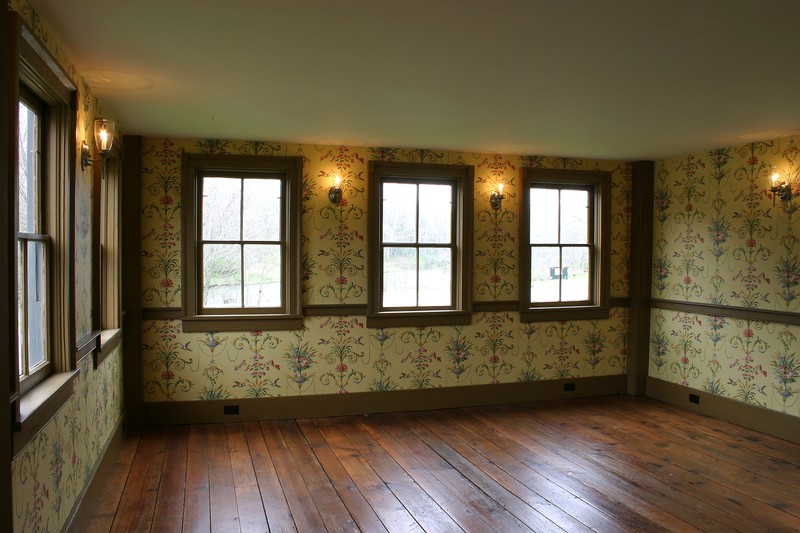
Restored second floor room, previously a bedroom
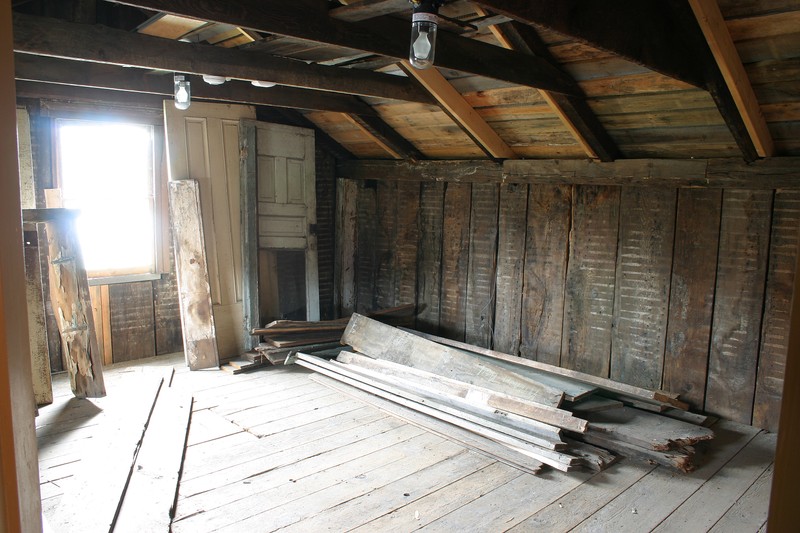
Reenactors of the Steele and McClintock families gather in the parlor
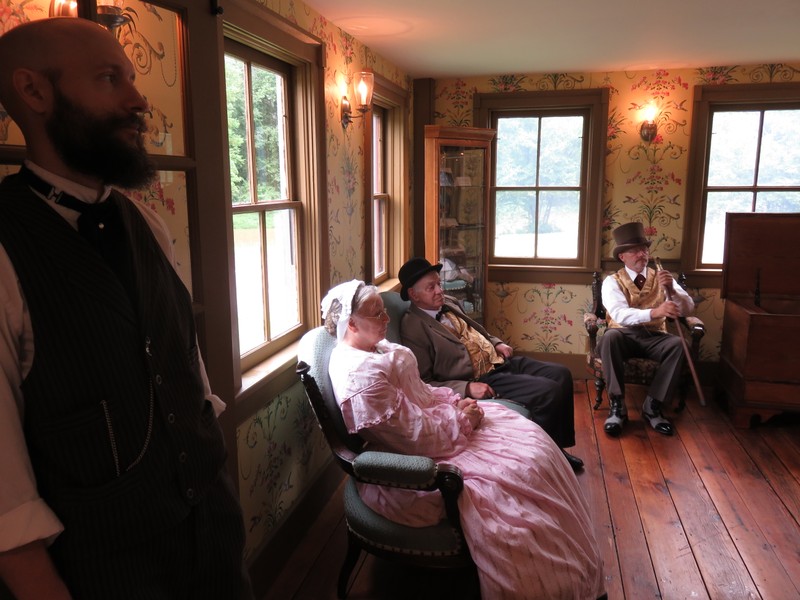
This illustration of Coal Oil Johnny appeared in many newspapers around 1906, along with a false obituary

John didn't actually make this soap, but the use of his name in marketing indicates household familiarity

Coal Oil Johnny during his stint in Philadelphia
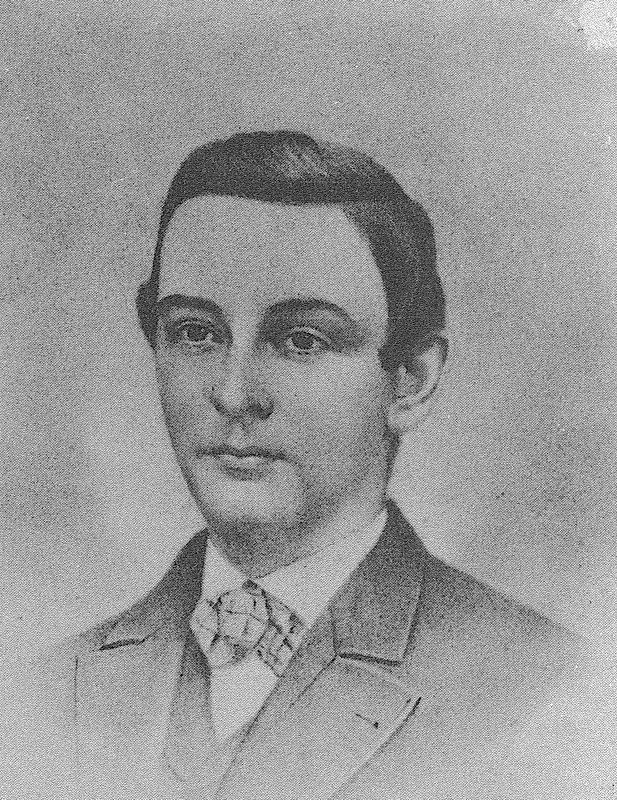
Backstory and Context
Text-to-speech Audio
This home was originally owned by Culbertson and Sarah McClintock, relatively well-to-do farmers living along Oil Creek in Venango County, Pennsylvania. They built this two-story wooden frame house in 1850. Metal fastenings were scarce, so the timber joints were joined by wooden pegs. Whilst this method of building dates back to Medieval Europe, its sturdy and time-tested results kept it popular up through the 1900s.
Before his death in 1855, Cubertson adopted the orphaned John Washington Steele. Sarah continued caring for the boy until her 1864 death in a house fire. Now 21 and freshly married, John began raking in oil royalties, also discovering a safe of money Sarah had kept in the house after she leased some of their land to oil seekers. He now was in charge of these leases and so recieved his royalties. He stayed on the farm for a short time before setting off for Philadelphia with his riches, leaving his wife and infant son behind. It was during his two-year spending spree that he became nationally known as “Coal Oil Johnny”, the man who reportedly literally had money to burn, as folklore states he would light cigars with $100 bills.
During this time, he not only managed to spend the modern equivalent of $8 million, but to accumulate sizable debts as well. After he lost the farm to bankruptcy, John took work wherever he could, moving his family to a new state whenever his reputation would catch up with him. Larry and Carole Waitz were the next owners of the house, adding a kitchen around back and expanding the porch. Unfortunately, this 1,024 square foot house fell into disrepair, and in 1997 Preservation PA, Inc. added it to the list of Pennsylvania’s Most Endangered Historic Properties. The Oil Region Alliance bought it in 1999 for $1.
The structure had to be fumigated twice to remove an infestation of powderpost beetles that were weakening the structure. All non-original materials were removed before the rest of the structure was dismantled, transported to the Oil Creek State Park, and reconstructed. The foundation stones were supplemented by cement blocks and support beams were added to damaged posts. While the goal was to restore the home to its 1860s appearance, some safety and security updates were made while preserving the look of the house. The internal restoration took place in 2005 and was supplemented by donations of period-appropriate furniture from local organizations.
Today, the Coal Oil Johnny House (also known as the McClintock-Steele-Waitz House) operates as a house museum along the Titusville and Oil City railroad tracks. The house is open to the public for various events, or for scheduled tours. The history of the oil boom and John Washington Steele are depicted by artifacts, historical summaries, and photographs stationed throughout the house. While Coal Oil Johnny’s name and notoriety have faded from the national consciousness, his story of rags-to-riches-to-rags mirrors those of others who rose to fortune and died in debt, such as Bitcoin investors, Michael Jackson, or Mark Twain.
More about John Steele:
John Steele began life as the adopted son of the McClintocks, rural farmers in the Oil Region of Pennsylvania. He recalls bragging heartily in his youth that his Rouseville home was furnished with a stove-top rather than an open fire. His first tastes of the world outside came with the oil seekers – men whose flannel and horses greatly impressed the boy. He was even more dazzled when a relative brought him on a trip to Pittsburgh, astonished by the hotel room and quite unsure if he was truly allowed to sleep on the bed.
He came into his fortune after the McClinkocks died in 1864, leaving him the farm and it’s oil royalties. At the time, the wells were pumping steadily and so he suddenly had more money than he knew what to do with. He first spend hundreds helping friends and family with mortgages, clothes, and education, but when his wife Eleanor (married 1862) fell ill, he moved to Philadelphia to seek treatment. This would prove to be the first true step on his journey from farm boy to nationally-known oil baron. While attending to his wife, he received news that the new wells on his property had become “gushers”, multiplying his already sizable fortune. Expecting the windfall to be short-lived, John resolved to have a good time while he still could. Sending his wife and infant son back to the farm, John fell in with some “friends” who offered to show him the town, at his expense. One of these men was Seth Slocum, who John gave unfettered access to his money during a drunken haze.
In his memoir, John refutes many of the more outlandish stories told about him, explaining they were actually the work of Slocum or one of his hangers-on, though using “Coal Oil Johnny” money. He did concede that he could have been responsible for some of the antics while Blackout drunk, and thus have no memory. He also states that he did contribute to soldier’s monuments and funds for the poor. He goes on to describe some of his more foolish actions. John, while under the influence of whiskey, professed a great love of smashing any stovepipe hat he laid his eyes on, once inciting an inebriated mob to swing their canes at every hat in the room, whether worn or set aside. When he became convinced he was destined for stardom, he purchased a cornet (a type of brass horn). By all accounts his daily practice sessions caused great irritation throughout the hotel in which he lived. After a veritable avalanche of angry, pleading, and threatening notes turned up on his doorstep he abandoned this venture. Throughout the last few months of his wild lifestyle, he spent thousands to become a boxer, ice skater, a hotel manager, a theater patron, and race-horse owner, all to no avail. These and other such exploits built the legend of Coil Oil Johnny, the man who couldn’t get rid of his money fast enough.
Six months after he received his first oil royalties in 1864, John’s funds ran out. Slocum’s excessive spending and generosity towards his circle of gamblers, dandies, drunks and con men had depleted the nearly $8 million fortune John had accumulated. Lawsuits and loans began to pile up, scaring John into sobriety. When news reached him that his “friends” back home had pressured and tricked his wife into signing over ½ a business block, a $10 thousand property, and a secondary farm formerly belonging to her, his alarm increased. These misfortunes culminated in 1867 when he went completely bankrupt, losing their home to angry creditors. As his last act as Coal Oil Johnny, John gave his driver ownership of the horses, carriages, and stable he’d used in Philadelphia.
Too ashamed to go home, John wandered from city to city from 1866 to 1867, working as a ticket-seller for a minstrel show he’d formerly financed. A letter from his wife finally reached him, begging him to come home. Astonished by her professions of forgiveness and love, he returned to the Oil Region, meeting a warm welcome. According to him, this so touched his heart that he resolved to never drink again and to spend the rest of his life caring for his family. John made good on his resolution and often worked 17 hour days to provide his wife and son, Oscar, with a comfortable life. He harbored a vitriolic hatred for reporters, who he accused of turning him into an even bigger fool than he actually was. Whenever a local reporter realized “Coal Oil Johnny” was living in their town, the Steele family would move to avoid the storm of infamy. John died in 1921 in Nebraska, having worked to become a respectable citizen, a reliable husband, and a good father after his months as a nationally-recognized spendthrift.
Sources
Burden, Jennifer. Historic Properties Series McClintock-Steele-Waitz House. Oil City, Pennsylvania: Oil Region Alliance of Business, Industry & Tourism, 2019
.*, Caitlin. “The Importance of the Peg.” Vermont Timber Works, Vermont Timber Works, 13 Feb. 2020, www.vermonttimberworks.com/blog/the-importance-of-the-peg/.
Madrigal, Alexis C. “The Legend of Coal Oil Johnny, America's Great Forgotten Parable.” The Atlantic, Atlantic Media Company, 28 July 2011, www.theatlantic.com/technology/archive/2010/10/the-legend-of-coal-oil-johnny-americas-great-forgotten-parable/64475/.
Steele, John Washington. Coal Oil Johnny: His Book. M.A. Mong, Publisher, 1902.
Oil Region Alliance Archives
Oil Region Alliance Archives
Oil Region Alliance Archives
Oil Region Alliance Archives
Oil Region Alliance Archives
Oil Region Alliance Archives
Oil Region Allaince Archives
https://www.theatlantic.com/technology/archive/2010/10/the-legend-of-coal-oil-johnny-americas-great-forgotten-parable/64475/
https://www.hippostcard.com/listing/coal-oil-johnnys-petroleum-soap-approx-size-inches-3-x-425-coal-oil/5098418
Oil Region Alliance Archives
